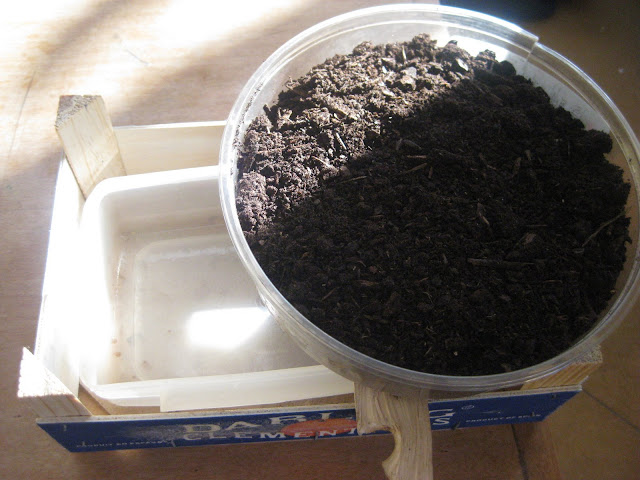I've mentioned before, we tend to mostly un-school for science and nature study. We keep nature journals, though we take them out much less often than I would like, go for hikes, do science experiments, rip apart a lot of appliances and electronics, and read, read, read.
Since October we've been casually working our way through "Building Foundations of Science Exploration" by by Bernard J. Nebel, and we're still loving it. Guided by that book, we're in the midst of a lot of conversation and experimentation around states of matter, particulate nature, and air pressure. A few of our more successful demos in this study have been the "build your own thermometer", "watch the quarter 'pop'", and a demo with a cup showing that air does indeed take up space (and is therefore matter).
I had a plan for today, involving a demonstration of air currents using a paper spiral held above a lamp. I had it fairly prepared and ready to go when we got side tracked on the computer and stumbled across this link for natural pools. I had read an article about how to build one of these about 5 yrs. ago in "Mother Earth News". I love the idea, saved the article, then promptly misplaced it. The kids and I perused this web site and decided that if we ever find ourselves with a little (a lot) of extra cash we'll build one of these.
Of course that was way too long to wait for Wylie, who decided he'd design one right then and there--a model at least, so we could see how it would work for this summer...
After hashing out a few details (ie where to find water plants in the middle of winter in Maine) we decided on a living soil filter for the pool. As follows:
Water is poured through the soil (which is planted with alfalfa and oat seeds), will drain through the future root system, through a layer of course rocks, and through a final layer of gravel. This "filtered" water then drips through a tiny hole in the bottom into our "pool". Ideally a pump would pump the water from the pool back up to the filter, cyclically. Wylie tried to build a tiny bilge pump out of a syringe but it didn't work. We decided (with a little coaxing from me) that pouring the water would be fine for our demo.

layers of soil, rock, and gravel
Well, after this there was some talk about natural filters and water pollution. I gave up on my air currents experiment and turned to one of the experiment books from out shelf. Below is the result--two different types of filters. This experiment is from a book that I don't particularly like. The experiments are interesting but are not well explained, nor the explanation of the result given. This one didn't even look like it was working, but we'll give it a day or two and see how it does. The dirty water (in the elevated container) is supposed to be "filtered" by the cotton strip, leaving clean water in the ball jar. The water was wicking its way up the cotton too slowly to tell if it was working. The ball jar in back is a soil filter similar to our own (but without the living plants).
So, that's how science often goes in our house. Some somewhat linear science study by the book (per se) and a lot more self directed experimenting through trial and error based on the inspiration of the day. Here are several of our favorite science books that we turn to for explanations, demonstrations, and facts.
 |
| Born With a Bang, From Lava to Life, and Mammals Who Morph a three part history of the world (but very scientific, with lovely pictures) by Jennifer Morgan |
 |
| The New Way Things Work, and The Way We Work, by David Macaulay |
Not pictured is another favorite which Wylie has squirreled away somewhere is The Kingfisher Encyclopedia of Science.
From air currents to natural pools, to water pollution and a home made filtration system (which the kids afterward decide would make an ideal habitat for a frog). Days like these make me so glad they're not stuck in a classroom with a strict curriculum and a 40 minute time slot.
Oh, and the morning spent ice skating was pretty nice too.




Homeschool Thursdays are my favorite days to read. I love seeing all the fun things you guys have been up to, and storing away fun ideas for the future.
ReplyDelete